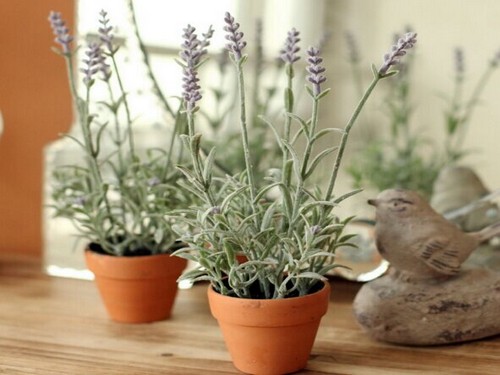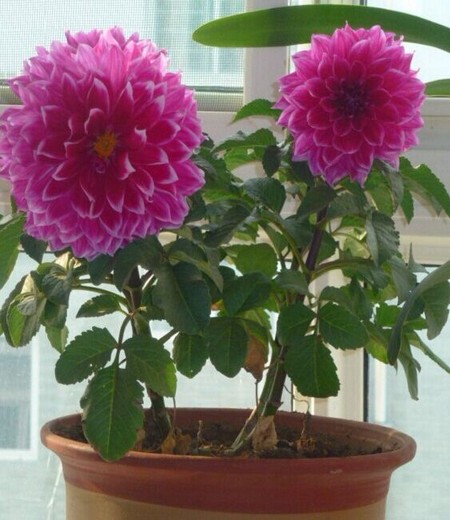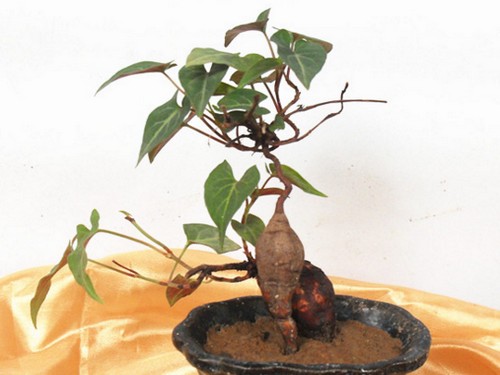How to raise lavender in potted plants
Lavender is very suitable, it not only has a beautiful appearance, has a high ornamental value, it can also be used in pharmaceutical, lavender pillows, extract flavors to make perfume and so on. In order to give a healthy environment at home, many friends also plant lavender in their own homes. How to plant lavender seeds? How to improve the germination rate of lavender? This problem is no longer a big deal for flower growers, but many friends who are not clear about planting have a lot of doubts. Growing flowers is not so easy and requires skill and patience. Patience can be cultivated by everyone, so the planting technique will be explained by the editor.

1. Soil: lavender seeds are suitable for slightly alkaline or neutral sandy soil. Good drainage requirements can be used after mixing perlite, vermiculite and peat moss. If you want to pay attention to the drainage of the soil when cultivating in the open field, you can pile the soil high and then plant it. Lavender seeds are small, suitable for seedling transplanting, warm areas can be sowed at any time throughout the year, cold areas should be sown in spring. Before sowing, the land is leveled and watered, and after the water seeps, the seeds are evenly sown, then covered with a layer of fine soil, which is 2-3 times thicker than the seeds, and covered with grass or plastic film to preserve moisture.
Seed treatment: the optimum temperature for lavender seed germination is 15-25 ℃. Because of its long dormancy period, lavender seeds should be soaked in 920 for 6 hours before sowing, and the germination time is about 2 weeks. If it is not treated with gibberellin, it will take more than a month to germinate.
2. Watering: lavender does not like the retention of water in the roots. After one-time watering, the soil should be fed again when the soil is dry. The surface culture medium is dry, the interior is moist, and the leaves wilt slightly. Watering should be kept away from the sun, usually in the morning, water should not be splashed on leaves and flowers, otherwise it is perishable and breeds diseases and insect pests. A persistent humid environment can lead to poor growth of the roots without enough air to breathe, or even sudden death of the whole plant, which is often the reason for the failure of lavender cultivation.
Lavender has few requirements for moisture, so it is best to put it outdoors in summer, and it is best to accept eight hours of sunlight a day, but it is necessary to replenish water in time to prevent the soil from being completely dry, which is different from planting on the ground, so it is necessary to detect whether the pot soil needs water in time. When the soil is about one centimeter dry, it can be watered. The topsoil needs watering only when the topsoil is two centimeters dry in winter.
3. Lighting: lavender is an all-day plant, which needs sufficient sunlight and humid environment. The environment that can give full sunshine is better, and half-day sunshine can also grow. Summer should cover at least 50% of the sun and increase ventilation to lower the ambient temperature, so that although the growth is weak, it does not die. In winter, lavender can grow well on flat land and should be cultivated under full-day sunshine.
4, temperature: lavender is semi-heat-resistant, cool, warm in winter and cool in summer, the suitable temperature for growth is 15: 25 ℃, and can grow at 5: 30 ℃. The limiting temperature is above 35 ℃, which is higher than 38-40 ℃ for a long time. The top stem and leaf are withered and yellow. In northern China, dormancy begins when it is below 0 ℃ for a long time in winter, and the seedlings can tolerate a low temperature of-20 ℃ per square meter during dormancy.
5. Fertilization: fertilizing can put bone powder in the basin soil as base fertilizer, usually once a quarter, seedlings can apply Huabao No. 2 (20-20-20), and then apply fertilizer with higher phosphate fertilizer such as Huabao No. 3 (20-30-20) after growing up. Apply light fertilizer.
6. Pruning: lavender flowers are the most abundant in essential oil, and flowers or inflorescences are mainly used. In order to facilitate harvest, some small inflorescences at the initial stage of cultivation might as well be completely trimmed with large scissors, and the newly grown inflorescences are highly consistent, which is beneficial to a harvest. Some varieties can reach a height of up to 90 centimeters, and this method is also used to make the plants low and make them more branched, blossom and increase the yield. After flowering, the plant must be pruned, and the plant can be pruned to the original 2umber 3, so that the plant type will be stronger and conducive to growth. Pruning is usually in spring, and pruning in autumn will affect cold resistance. Finally, it is important not to hurt the woody part when pruning, so as to avoid the death of the plant.
Trim it every spring, cutting off the upper 1/3 of the length, not to the woody, thicker part of the base. Of course, cutting in autumn is better than in spring. If you see that green buds have appeared at the base, be careful not to cut them off.
Lavender is a herb that is very popular with flower friends, especially female flower friends. If you can keep a pot of lavender at home, this article will talk with you about how to grow potted lavender. I hope you can read it carefully. Don't copy it bluntly.
Lavender is still very suitable for potted plants, but there are some things we need to pay special attention to when potted lavender:
Pot must need well-drained soil (generally potted soil, add some sand and very fine gravel) the drainage hole should be unobstructed (the drainage hole at the bottom of the basin should be large, it is best to put one or two inches of stone at the bottom to help drain the water. ). Because lavender likes alkaline soil, a small tablespoon of hydrated lime can be added appropriately when planting. When potted, you can give a little bit of long-acting slow-release fertilizer, remember not too much, because lavender likes poor soil.
Don't worry that the pot is too small when potted, because lavender likes to grow its roots in a crowded environment. As long as there is one or two inches of room for growth at the root. On the contrary, if the basin is too large, the soil will be too moist and the roots will rot. Because the roots grow fast, the pots can be changed every year.
Time: 2019-06-01 Click:
- Prev

How do potted dahlias grow? Dahlia planting method
The key to the growth of potted dahlia lies in strengthening the management of pot soil, giving sufficient light, applying water and fertilizer frequently, and timely shaping and pruning. Dahlia is one of the most diverse species of flowers in the world, a symbol of blessing
- Next

Culture method of Polygonum multiflorum bonsai
Polygonum multiflorum can be used as raw and mature. It can detoxify, eliminate carbuncle, moisturize intestines and defecate. Main treatment of ulcerative ulcer carbuncle, rubella itching, intestinal dryness and constipation. Shouwu has the function of tonifying liver and kidney, tonifying essence and blood, black hair and strengthening muscles and bones. Main treatment of blood deficiency and yellowing, dizziness and tinnitus, early white hair, sore waist and knees, limb numbness, avalanche and leakage
Related
- Fuxing push coffee new agricultural production and marketing class: lack of small-scale processing plants
- Jujube rice field leisure farm deep ploughing Yilan for five years to create a space for organic food and play
- Nongyu Farm-A trial of organic papaya for brave women with advanced technology
- Four points for attention in the prevention and control of diseases and insect pests of edible fungi
- How to add nutrient solution to Edible Fungi
- Is there any good way to control edible fungus mites?
- Open Inoculation Technology of Edible Fungi
- Is there any clever way to use fertilizer for edible fungus in winter?
- What agents are used to kill the pathogens of edible fungi in the mushroom shed?
- Rapid drying of Edible Fungi

